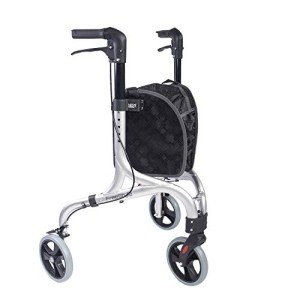Guide To Lightweight Walker: The Intermediate Guide The Steps To Light…
페이지 정보

본문
The Lightweight Walker: A Comprehensive Guide
Introduction
Lightweight walkers are necessary mobility aids designed to help individuals who have problem walking or preserving balance. Unlike conventional walkers, which can be cumbersome and heavy, lightweight walkers use enhanced portability and ease of use. This post checks out the features, benefits, and different types of lightweight walkers readily available, making it an important resource for individuals looking for enhanced mobility, caretakers, and health care professionals.
Understanding Lightweight Walkers
Lightweight walkers are generally constructed from materials such as aluminum or carbon fiber. Their style focuses on both sturdiness and ease of transportation and use. The development in engineering and production strategies has actually resulted in the advancement of models that can be effortlessly navigated, making them appropriate for a broad series of users.
Secret Features of Lightweight Walkers
- Product: Most lightweight walkers are made from high-strength aluminum or carbon fiber, making them simple to lift and transport.
- Foldability: Many models include a folding style for practical storage and transport.
- Weight Capacity: Despite their lightweight nature, they are developed to sustain substantial weight while preserving stability.
- Adjustable Height: Most walkers offer adjustable height settings to accommodate users of varying heights.
- Brakes and Wheels: Some models consist of wheels for increased mobility, along with brakes for safety when resting.
Here's a contrast table of some popular designs of lightweight walkers to help users make notified decisions:
| Model | Weight | Weight Capacity | Features | Cost Range |
|---|---|---|---|---|
| Drive Medical 10210-1 | 5 pounds | 300 pounds | Foldable, non-slip hand grips, lightweight | ₤ 60 - ₤ 80 |
| Nova 4200 | 8 lbs | 250 pounds | 8" wheels, a built-in seat, and adjustable | ₤ 120 - ₤ 150 |
| Medline E0302 | 7 lbs | 300 lbs | Side folding, 5" wheels, and ergonomic grips | ₤ 70 - ₤ 100 |
| Hugo Folding Walker | 6 lbs | 300 pounds | Adjustable height, includes backrest seat | ₤ 80 - ₤ 110 |
| Mego Mobility Walker | 8 pounds | 350 pounds | Double brakes, adjustable arms, addition of a basket | ₤ 90 - ₤ 130 |
Benefits of Lightweight Walkers
Lightweight walkers use many advantages to users, enhancing both mobility and lifestyle. Some of the noteworthy benefits consist of:

- Improved Mobility: They help individuals ambulate safely and with confidence, allowing them to participate in everyday activities and preserve independence.
- Alleviate of Transport: The lightweight nature and collapsible design make them simple to transfer in automobiles or public transportation.
- Customization: Many walkers permit height adjustments, ensuring a comfy fit tailored to the user.
- Enhanced Stability: These walkers provide the assistance required to assist prevent falls and injuries, specifically in older grownups.
- Variety of Designs: With a variety of designs available, users can choose walkers that best fit their personal preferences and needs.
Kinds Of Lightweight Walkers
Standard Walkers: Basic designs created generally for stability with rubber ideas, providing stability but minimal mobility.
Two-Wheeled Walkers: Equipped with front wheels, these walkers supply improved maneuverability while still providing support.
Four-Wheeled Walkers (Rollators): These walkers feature wheels on all four legs, making them simpler to browse over various surfaces. Lots of likewise include a seat, offering rest during long trips.
Tri-Wheeled Walkers: Ideal for users who need more dexterity in tight areas, tri-wheel designs are compact yet sturdy.
Picking the Right Lightweight Walker
When selecting a lightweight walker, think about the list below aspects:
- User's Weight and Height: Ensure the walker can accommodate the user's size effectively.
- Intended Use: Understand where the walker will be primarily used (indoors vs. outdoors) and choose wheels accordingly.
- Frequency of Use: For those using the walker daily, comfort features, such as grips and seat alternatives, might be needed.
- Safety Features: Look for designs with appropriate brakes or locking systems to ensure stability.
Often Asked Questions
Q1: Are lightweight walkers more expensive than traditional walkers?A1: Generally, lightweight walkers can be slightly more pricey than traditional walkers due to their advanced products and functions, however they provide significant benefits in mobility and ease of use. Q2: Can I use a lightweight walker if I have significant

mobility issues?A2: Yes, lightweight walkers appropriate for numerous mobility levels.
However, it's suggested to consult with a doctor or physical therapist for tailored advice. Q3: Do lightweight walkers come with warranties?A3: Most trustworthy producers provide service warranties, generally
ranging from one to 3 years, however it's necessary to
examine specific product details. Q4: How do I maintain my lightweight walker?A4: Regularly inspect for wear on wheels, brakes, and grips. Clean the walker with a damp
cloth and avoid direct exposure to harsh chemicals. Q5: Are there choices for personalizing lightweight walkers?A5: Yes, many manufacturers offer adjustable functions such as color alternatives, accessory of bags, and seat cushions
. Lightweight walkers are invaluable mobility aids that boost independence
, stability, and lifestyle for lots of individuals. Comprehending the different features, benefits, and types
offered can help users make informed choices. By selecting the right walker, individuals will find they can browse their environments with confidence and ease. As the population continues to age, lightweight walkers will remain important tools for mobility, guaranteeing that everyone keeps their freedom to move securely and efficiently.
- 이전글The 9 Things Your Parents Taught You About Veleco Draco 25.06.12
- 다음글bealls outlet 25.06.12
댓글목록
등록된 댓글이 없습니다.

